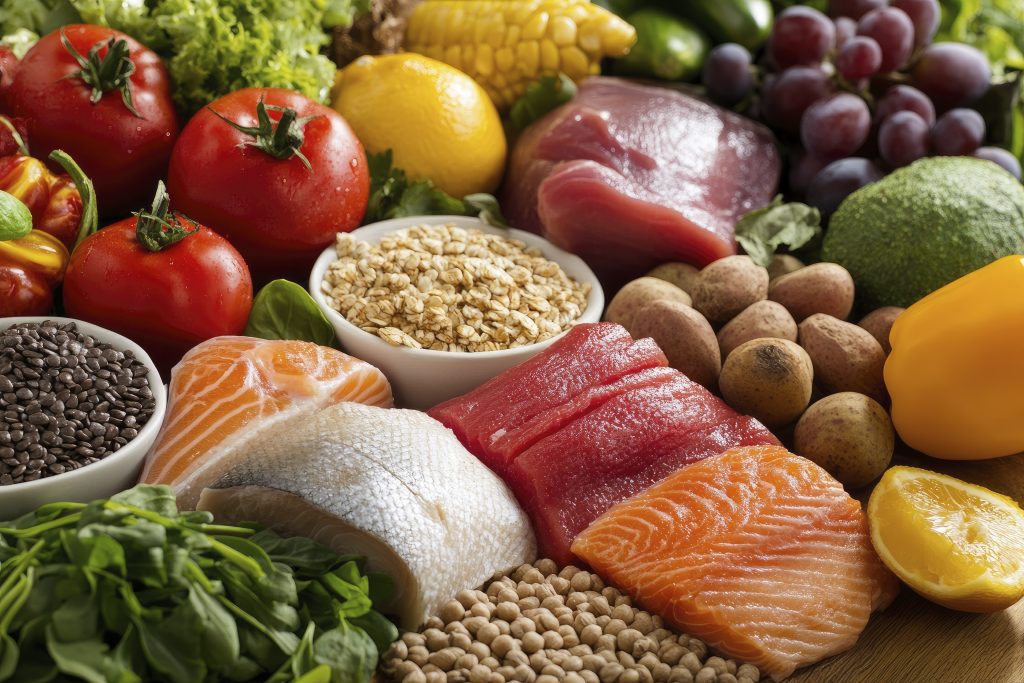
I used to think “eating healthy” meant following a long list of strict rules: no carbs after 6, drink this before that, no more than 1,200 calories a day, count every gram of protein, fat, and carb and definitely no dessert unless it was made with dates and almond flour. I tried almost everything. Some of it worked—for a little while. But mostly? It left me feeling stressed, guilty, and like I was failing at something as basic as feeding myself.
For most of my twenties, I was stuck in that cycle. Then came life as a mom to two energetic boys, plus running a home baking business — life was already full. Trying to juggle it all while following a mountain of food rules? It felt impossible. It wasn’t sustainable, and honestly, it left me feeling more anxious than empowered.
Then my health started to quietly decline. I’ve been living with Trigeminal Neuralgia (TN) for over 14 years – a condition that causes sudden, severe facial pain. At first, I didn’t think the flare-ups had anything to do with my lifestyle. I just thought it was because of pregnancy changes or the stress of motherhood. But over time, as the episodes became more intense and my energy kept dipping, I knew something wasn’t right. Something had to shift. I needed to take a step back and look at the whole picture — especially the impact my daily choices were having on my body.
I always knew food was important – we hear that all the time – but I don’t think I truly grasped just how powerful it could be when it comes to our health and healing. What really surprised me was how much my relationship with food was impacting my body.
As I started digging deeper, I learned that chronic pain conditions like TN can be influenced by things like inflammation and overall body balance. Highly processed foods and too much sugar can actually feed that inflammation, making symptoms worse. But on the flip side, nourishing the body with real, whole foods – the kind packed with antioxidants and anti-inflammatory compounds – can help calm things down, support healing, and reduce flare-ups.
This was my turning point. I stopped obsessing over the “rules” and started asking myself: What does my body really need? How do I feel after eating certain foods? What brings me joy and nourishment?
Nutrition experts agree that strict dieting often backfires because it creates stress and guilt—two things that can worsen health problems, especially those involving chronic pain and inflammation. Our bodies respond best when we eat in a balanced, flexible way that includes a variety of whole foods. That means veggies, fruits, healthy fats, quality proteins, and yes, even the occasional treat—because balance is key.
Another thing I learned was the importance of tuning into hunger and fullness cues instead of following external rules. Mindful eating isn’t just a buzzword—it’s a practice backed by science that helps reduce overeating and improves digestion and satisfaction with meals. When we slow down, enjoy our food, and listen to our bodies, we’re more likely to make choices that truly nourish us.
Alongside nutrition, I’ve also spent years studying Traditional Chinese Medicine (TCM), which has helped me connect so many dots in my healing journey. TCM sees food as medicine and focuses on balance, energy flow, and how what we eat impacts not just the body, but also the mind and emotions. Blending this ancient wisdom with modern nutrition has helped me create a more holistic approach to managing my TN and supporting my overall wellness.
Now, my eating philosophy is simple: real, whole foods that support my body, flexible enough to enjoy life, and free of guilt. I’m learning to live with TN in a way that respects my limits but also allows me to thrive. It’s about supporting my body through nutrition, rest, movement, and self-compassion.
So if you’re feeling overwhelmed by food rules or frustrated by your health struggles, you’re not alone. Healing is a journey, and there’s no one “right” way to eat. I encourage you to let go of the guilt, slow down, and really listen to what your body needs.
Let’s stop overthinking every bite and start enjoying food again. Even if that means dessert isn’t made with almond flour—and tastes even better because of it.